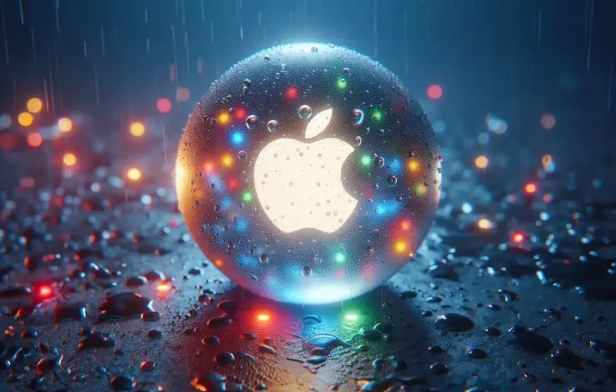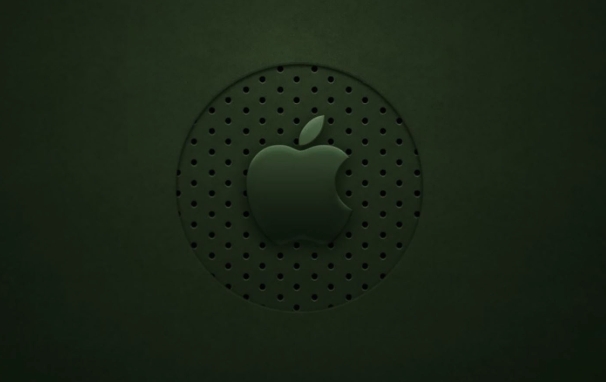How to install macOS without an Apple ID?
Jul 14, 2025 am 01:19 AMYou can install macOS without using Apple ID, but some functions are limited. During the installation process, you do not need to force login to the Apple ID. You can create a local account to use the basic functions of the system. However, functions such as iCloud synchronization, App Store download, and search for my Mac require an Apple ID to enable it. 1. During installation, you can use the USB drive to boot disk or recovery mode to create a local account; 2. The local account can browse web pages, edit documents, program development, and play media, but it is impossible to use iCloud and download most App Store applications; 3. Skip Apple ID to log in when you first boot up and create a local account; 4. Suitable for computer room equipment, development and testing, and privacy-sensitive users. It is still recommended to bind Apple ID to improve the experience for a long time.

Directly answer the title question: You can install macOS without using Apple ID, but some functions will be limited.

During the installation of macOS, you are not mandatory to log in to your Apple ID, especially when you install a brand new or reinstall the system. However, it should be noted that certain features (such as App Store download, iCloud synchronization, etc.) require an Apple ID to be used.

1. Install macOS without Apple ID
If you just want to install the system itself, you can complete the operation without entering the Apple ID. For example:
- Install macOS using USB drive boot disk
- Erase the disk in recovery mode and reinstall the system
After the installation is completed, the system will allow you to create a local account without binding the Apple ID. This account can use most functions normally, such as office software, browsers, development tools, etc.

Pay attention to a few details:
- The account created is a "local account" and does not synchronize iCloud data.
- Desktop wallpapers and some personalized settings cannot be synced using iCloud.
- If you want to download software from the App Store, you need to log in to your Apple ID.
2. What can I do without Apple ID? What can't be done?
Many people are worried that they can't use a Mac without using Apple ID, but this is not the case. The functions you can use normally include:
- Browse the web (Safari or Chrome)
- Edit documents (Pages, Word, etc.)
- Programming and development (Xcode, VSCode, etc.)
- Media playback (music, video, podcast)
However, the following functions will be limited:
- iCloud synchronization (photos, files, memos, etc.)
- App Store download app (although some free apps can be downloaded without logging in, most still require an account)
- Security features such as "Find My Mac"
3. How to create a local account without binding an Apple ID?
When the installation is completed, the system will guide you to create a user account. In this link, you can choose to skip Apple ID login. The specific steps are as follows:
- On the interface prompted to log in to Apple ID, click "Prepare in Settings later"
- The system will automatically create a local account for you
- You can then manage account types in "System Settings> Users and Groups"
hint:
- When creating a local account, remember to set a strong password for your password.
- If you want to bind Apple ID in the future, you can also add it in "System Settings> Apple ID" at any time
4. Who is suitable for not using Apple ID?
This situation is relatively rare, but there are indeed some user needs:
- Unit or school computer room equipment, multiple people share one Mac
- Develop a test environment, focusing only on system stability rather than personal data synchronization
- Privacy-sensitive users want to avoid being associated with cloud services
For these scenarios, it is completely acceptable not to use Apple ID, as long as you do not rely on iCloud and App Store features.
Basically that's it. Although Apple ID is not mandatory, it has been deeply integrated into the system experience in modern macOS. If you just use it temporarily or do basic development, it is okay to not have an account; but if you use it for a long time, it is recommended to bind one, which is much more convenient.
The above is the detailed content of How to install macOS without an Apple ID?. For more information, please follow other related articles on the PHP Chinese website!

Hot AI Tools

Undress AI Tool
Undress images for free

Undresser.AI Undress
AI-powered app for creating realistic nude photos

AI Clothes Remover
Online AI tool for removing clothes from photos.

Clothoff.io
AI clothes remover

Video Face Swap
Swap faces in any video effortlessly with our completely free AI face swap tool!

Hot Article

Hot Tools

Notepad++7.3.1
Easy-to-use and free code editor

SublimeText3 Chinese version
Chinese version, very easy to use

Zend Studio 13.0.1
Powerful PHP integrated development environment

Dreamweaver CS6
Visual web development tools

SublimeText3 Mac version
God-level code editing software (SublimeText3)

Hot Topics
 Detailed explanation of the installation steps of MySQL on macOS system
Apr 29, 2025 pm 03:36 PM
Detailed explanation of the installation steps of MySQL on macOS system
Apr 29, 2025 pm 03:36 PM
Installing MySQL on macOS can be achieved through the following steps: 1. Install Homebrew, using the command /bin/bash-c"$(curl-fsSLhttps://raw.githubusercontent.com/Homebrew/install/HEAD/install.sh)". 2. Update Homebrew and use brewupdate. 3. Install MySQL and use brewinstallmysql. 4. Start MySQL service and use brewservicesstartmysql. After installation, you can use mysql-u
 How to install AdobeReader on macOS
May 16, 2025 pm 08:33 PM
How to install AdobeReader on macOS
May 16, 2025 pm 08:33 PM
AdobeReader no longer supports macOS, and AdobeAcrobatReaderDC is required. 1) Visit Adobe's official website and download a version suitable for macOS. 2) Open the .dmg file, drag the icon to the "Applications" folder, enter the administrator password and complete the installation. 3) Start Adobe AcrobatReaderDC from the "Applications" folder.
 How to install macOS on a blank hard drive?
Jul 07, 2025 am 12:32 AM
How to install macOS on a blank hard drive?
Jul 07, 2025 am 12:32 AM
Installing macOS from scratch is not complicated, just prepare the tools and follow the steps. First, prepare a working Mac, at least 16GB USB drive, a stable network connection and sufficient time; secondly, it is recommended to use the createinstallmedia command in Terminal to create a bootable installer; then enter the installation interface through RecoveryMode or USB installer; then use DiskUtility to format the target hard disk as APFS or MacOSExtended; finally follow the prompts to complete the installation process.
 Fixing the 'Untrusted_Cert_Title' error during macOS installation
Jul 07, 2025 am 01:06 AM
Fixing the 'Untrusted_Cert_Title' error during macOS installation
Jul 07, 2025 am 01:06 AM
To resolve the "Untrusted_Cert_Title" error, you must first make sure to use the official certified installer and create it correctly. Secondly, check whether the system time settings are accurate, then update the firmware and bootstrap, and finally try to install macOS through the network recovery. The specific steps are: 1. Use the official AppStore installer and create a USB installer through Apple tools such as createinstallmedia to avoid manually copying files or using third-party tools; 2. After entering recovery mode, correct the date and time through terminal commands; 3. Check and update the EFI or firmware of the Mac to confirm that the hardware supports the target macOS version; 4. Long press Option Command R to start the network
 macOS could not be installed because the path /System/Installation/Packages/OSInstall.mpkg appears to be missing or damaged
Jul 06, 2025 am 01:04 AM
macOS could not be installed because the path /System/Installation/Packages/OSInstall.mpkg appears to be missing or damaged
Jul 06, 2025 am 01:04 AM
When encountering the prompt "macOS could not be installed because of the path/System/Installation/Packages/OSInstall.mpkgappearstobemissingordamaged", it means that the system installation package is missing or damaged during installation or upgrading macOS, which is common in old version recovery images, third-party boot disks or disk structure abnormalities; solutions include: 1. Confirm whether the boot media is complete, it is recommended to use the official createinstallmedia command to create a boot disk and check whether OSInstall.mpkg exists; 2. Select " from recovery mode"
 How long does a macOS installation take?
Jul 03, 2025 am 01:06 AM
How long does a macOS installation take?
Jul 03, 2025 am 01:06 AM
AcleanmacOSinstallationtypicallytakes30minutestoanhour,butseveralfactorscanextendtheprocess.1)InternetRecoverymayadd15minutestooveranhourforOSdownload,dependingoninternetspeed.2)Installationtimevariesbetween20–40minutesafterdownloadcompletion.3)Stora
 How to install macOS without an Apple ID?
Jul 14, 2025 am 01:19 AM
How to install macOS without an Apple ID?
Jul 14, 2025 am 01:19 AM
You can install macOS without using AppleID, but some functions are limited. There is no need to force login to AppleID during the installation process. You can create a local account to use the basic functions of the system. However, functions such as iCloud synchronization, AppStore download, and search for my Mac require AppleID to enable it. 1. When installing, you can use the USB drive to boot disk or recovery mode to create a local account; 2. Local account can browse web pages, edit documents, program development, and play media, but it is impossible to use iCloud and download most AppStore applications; 3. Skip AppleID to log in for the first time to create a local account; 4. Suitable for computer room equipment, development and testing, and privacy-sensitive users, and it is recommended to bind Apple to long-term use.
 macOS installation failed an error occurred while preparing the installation
Jul 11, 2025 am 12:37 AM
macOS installation failed an error occurred while preparing the installation
Jul 11, 2025 am 12:37 AM
When you encounter the prompt "macOSinstallation failed:anerroroccurredwhilepreparing theinstallation", it is usually caused by an abnormal boot disk, inconsistent disk format, cache problems, or network connection failure. 1. First check whether the startup disk is complete. It is recommended to use the official installation package and createinstallmedia tool to create it, or try network recovery mode; 2. Make sure that the target disk format is APFS (HighSierra and above) or MacOS extension, and adopt the GUID partition table, and erase the disk reformat if necessary; 3. Clean up the NVRAM/PRAM settings, and hold down O when powering on.






